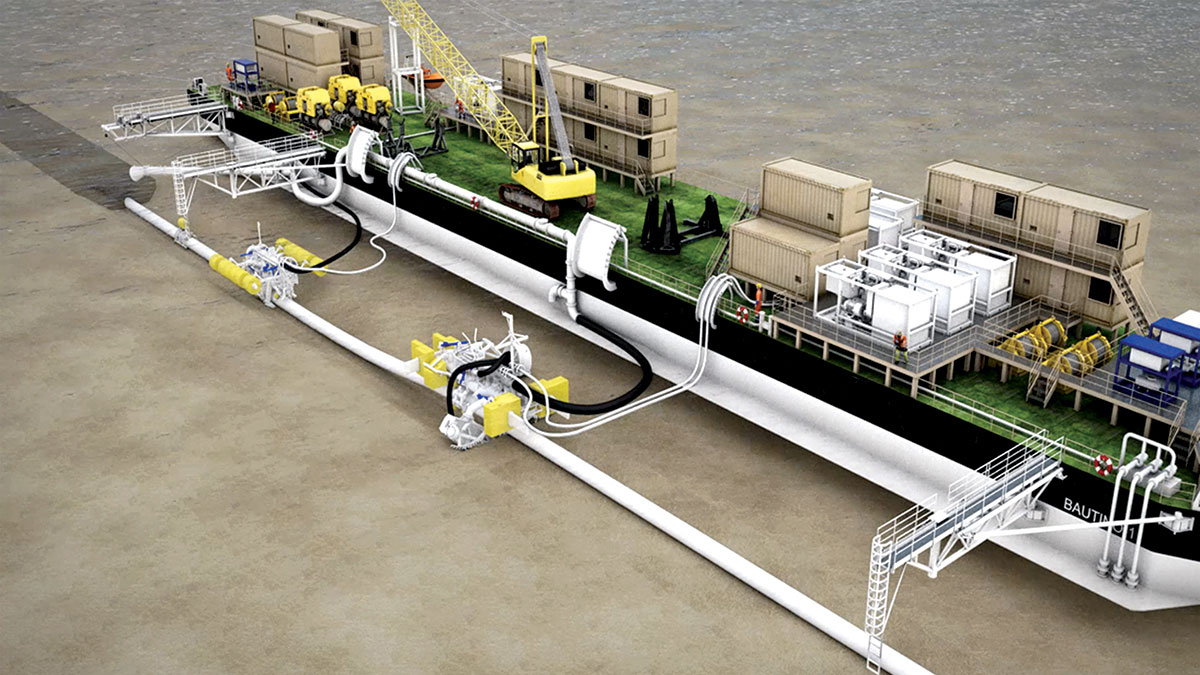UNDERSEA INNOVATION
New technology rollout digging technique cuts environmental, construction costs dramatically in GCC first

Global March 02, 2021
Offshore Projects is transforming from classical trenching technique to latest technology in a GCC first.
Project Management (PM) is set to deploy an innovative underwater pipeline laying technology, which will cut environmental damage by almost half, and construction time by almost one-third.
Offshore projects are unique in nature where specialized and expensive construction resources are required to execute the work with many challenges to address.
Seabed trenching is among the most challenging activities in offshore projects, due to the long execution duration, and the involvement of multiple offshore resources. Conventionally, a trench can be cut into the seabed with a backhoe until reaching the targeted depth below the mudline to install subsea pipelines or cables, followed by backfilling.
The new post-lay trenching technology is capable of digging undersea trenches and filling them in simultaneously.
Positive impact
The technology has two trenching modules installed on top of a pipeline, which are aided by sensors to create an optimized trenching profile that brings the pipeline to a targeted depth below the seabed. As a result, the disturbed area from the seabed is reduced by 45%, while construction time is shortened by 30%, when compared to conventional methods.
Apart from the positive economic impact, the reduction of the environmental footprint includes mitigating the impact on several threatened marine habitats in the Arabian Gulf, such as coral reefs, fish hatcheries, sea grass, and mangroves.
Explainer
Conventionally, In addition to the cost resulted from schedule savings, a significant cost reduction can be assumed from the eliminated environmental protection and impact offset requirements. For instance, ssilt screens are installed at both sides of the trenched corridor, to localize the turbulence resulting from big-scale trenching digging operations. With the minimized mud turbidity resulting from the deployment of this trenching technology, the installation process can be significantly minimized, and in many cases eliminated, from the project requirements.
Abdulaziz F. Al -Dulaijan, manager of the Offshore Projects Department (OPD)manager, said the new technology was first seen in a gas field development off the northern coast of Egypt.
“Due to the encountered challenges observed from previous trenching projects, (the) Offshore Projects team of Aramco has been continually exploring international best practices to facilitate bottlenecks and encountered challenges of the projects,” Al -Dulaijan said.
“The subject technology was noticed during the early development stages, and monitored during its first-time deployment,” he said.
After noticing the successful completion of this project, aA taskforce from Project Management, the Consulting Services Department, and Marine was formed to evaluate and capitalize on the technology for its first ever deployment in the GCC zone.
— Abdulaziz F. Al Dulaijan, OPD manager
“As a result of minimizing the number of offshore resources, PM realized a significant cost reduction when compared to the classical trenching approach, in addition to the environmental protection benefits,” he added.
The innovation is part of On the trail of Aramco’s strategy to optimize project resources and minimize the company’s environmental footprint, OPD has concluded its efforts to qualify the post-lay trenching technology.



